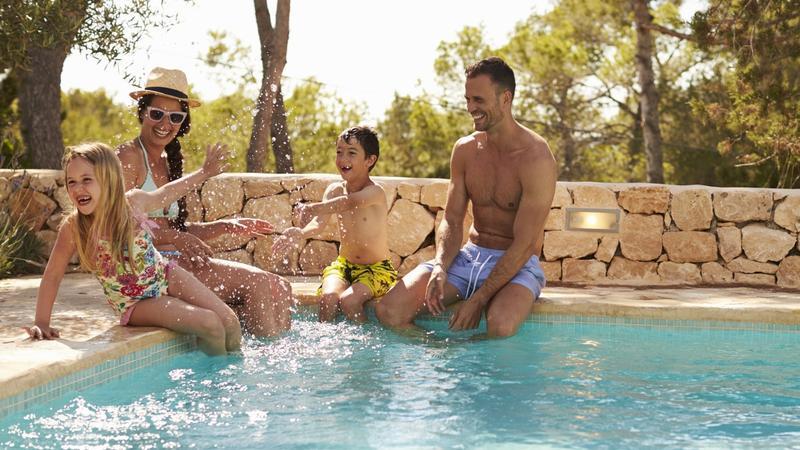Ah, sunny days on the deck, relaxing with friends with a piña colada, cooling off in the pool. It’s the picture of a perfect suburban summer.
Swimming pools are wonderful. I’m hoping the municipal Summerville Pool in the Beaches opens this summer once the threat of COVID-19 has receded. But if you’re considering installing a pool at your home, or buying a resale or new home with a pool, there are implications for the rates of your home insurance.
Swimming Pools and Insurance Risks
The most obvious risk of having a swimming pool is that someone — or even someone’s pet — could drown. The area around an inground pool is concrete; when it’s wet, slips and falls can be dangerous.
There’s the risk of someone striking their head on the bottom of the pool, especially if you have a diving board. Horseplay is another risk — no matter how many times you tell children or adult men who have had four beers, the temptation becomes too much, especially if you invite over friends to host a barbecue. The increase in liability means an increase in the amount of liability insurance you have to carry.
Pools are also considered an “attractive nuisance.” That means you could still be liable even if a trespasser injures himself.
There’s also an often-unrecognized impact on your insurance that comes with a pool: It raises the value of your property. If you’re buying a new or resale home with a pool, that will already be a factor. If you’re having a pool installed, your premiums will go up simply because of the increase in value. There’s also the additional cost of insuring the pool itself from damage.
Above ground pools are another issue. It often depends on a municipal definition of a swimming pool based on size or depth. You probably don’t need to tell your insurer you bought a six-inch-deep kiddy pool to sit in on hot summer days but check with your municipality — and your insurance provider — on what constitutes a swimming pool for liability purposes.
Steering Clear of Accidents and Filing Claims
There are many measures you can take to prevent an incident involving your pool. It’s not just about liability — you don’t want an injury or, heaven forbid, a fatality on your conscience. It’s worth considering increasing the liability coverage within your home insurance policy if you install a pool, or if purchasing a new home with a pool installed.
Consider these helpful suggestions to prevent an accident in or around your swimming pool:
- The Pool and Hot Tub Council of Canada have created a draft municipal bylaw regarding the fencing and “layered protection” of homes with swimming pools. These layers include intrusion alarms, physical barriers (a fence that can’t be climbed), and a poolside phone with emergency numbers posted.
- There is no substitute for competent adult supervision. Someone always has to be alert and aware, especially when children are involved. Vigilance is not only the price of freedom; it’s the price of pool ownership.
- Litter the pool with flotation devices. Pool noodles, flutterboards, life rings, whatever. If someone starts to flail in the water, he or she should have something to support them within reach. Get a poolside shepherd’s hook as well.
- Signage. A “No Trespassing/Danger” sign on your fencing shows you’ve taken care to prevent “attractive nuisance” incidents. A “No Diving” sign may be appropriate. Have rules and post them. No running. No horseplay.
- Every member of your family should have first aid and safety training. (Actually, come to think of it, shouldn’t everyone anyway?)
- Never let someone swim alone in the pool. Always have at least one other person, even if he or she is on the deck.
- Take swimming lessons. It’s ironically apparent, but, if you have a pool, your family should know how to swim.
